Singaporean Food Dishes: Basic Overview
Common Ingredients
Common Cooking Methods
Courses
Meals
Key Taste
Eating Etiquette
Meal Presentation
Culinary Festivals
Influence and Fusion
Popular Types of Singaporean Dishes
-
Dry noodle dishes
Singaporean dry noodle dishes often include a variety of meats, such as chicken, beef, or seafood, prepared in different styles.
The noodles, which can be thick or thin, rice-based or wheat-based, are typically tossed with sauces.
Their flavors range from soy-based to spicy, offering a blend of savory, sweet, and sometimes spicy.
The inclusion of ingredients like vegetables and eggs adds further depth to these dishes.
-
Cakes and pastries
Cakes and pastries in Singapore range from sweet to savory and are often enjoyed as snacks or light meals.
Common ingredients include rice flour, coconut, and pandan, showcasing Singapore’s tropical environment.
These treats are available in a variety of textures, from fluffy and soft to crispy and flaky, and are often found in street food settings and local bakeries.
-
Desserts
Singaporean desserts are a diverse array of sweet treats, often featuring local ingredients like coconut milk, pandan, and tropical fruits.
They range from cold desserts like shaved ice with various toppings to warm, comforting soups with sweet components.
Textures vary widely, from the creamy smoothness of tofu puddings to the chewy delight of rice flour jellies.
-
Fried dishes
Fried dishes in Singapore are celebrated for their crispness and rich flavors.
These can range from stir-fried noodle dishes to deep-fried snacks. Ingredients like seafood, chicken, and a variety of vegetables are often used, seasoned with a mix of spices and sauces.
The use of ingredients like tamarind and chili adds a distinct flavor profile to these dishes.
-
Grilled and barbecued dishes
Grilled and barbecued dishes from Singaporean cuisine showcase a variety of meats and seafood, often marinated with a blend of local spices and herbs.
The slow grilling process over charcoal imbues these dishes with a distinctive smoky flavor.
Accompaniments like spicy peanut sauce or tangy dips enhance the flavors, making these dishes a popular choice in hawker centers and outdoor food stalls.
-
Pancakes
Singaporean pancakes are a versatile category, ranging from sweet to savory.
They can be thin and crispy or thick and fluffy, often made with a variety of fillings like meat, seafood, or vegetables.
The cooking methods include pan-frying to achieve a golden-brown crust.
These pancakes are commonly served with complementary sauces that add to their flavor profile.
-
Rice dishes
Rice is a staple in Singaporean cuisine, leading to a wide array of rice-based dishes.
These range from simple, lightly flavored dishes to complex, richly seasoned meals.
Accompaniments vary widely, including meats, vegetables, and sauces, each adding their own unique flavor and texture.
The versatility of rice allows it to be used in dishes that range from sweet to savory, showcasing the adaptability of this staple grain.
-
Soups
Singaporean soups span a broad spectrum, from light and brothy to rich and hearty.
Ingredients commonly used include meats, seafood, and a variety of vegetables, each contributing to the depth of flavor.
Some soups are served as a meal in themselves, while others act as a complement to other dishes.
-
Snacks
Snacks in Singapore are an essential part of the culinary landscape, known for their convenience and flavor.
These light bites can be sweet or savory and are perfect for on-the-go eating.
Street food vendors and local eateries offer a wide variety of snacks.
Singaporean dishes are culinary delights widely enjoyed and prepared in Singapore, a city-state and island country in Southeast Asia. Due to the country’s cosmopolitan and multi-ethnic nature, its cuisine is hugely diverse and open to adaptation.
Singaporean dishes are a mixture of various cuisines, especially Southeast Asian, Chinese, South Asian, and European.
Malaysian foods influence numerous local dishes, while regional Chinese cuisines, especially Hokkien and Teochew cuisines, contribute to many staple dishes. Indian, Indonesian, and British culinary traditions are also a strong influence.
In addition, other cuisines, like Thai and Arab, leave a lesser but still significant mark in Singaporean cooking. The interactions between all those cooking traditions have turned the island nation into a culinary melting pot, the forge of many finger-licking fusion dishes.
Hawker centers are the best places to enjoy good food in Singapore, which is also known as the Lion City or Garden City. These facilities are open-air complexes selling various types of foods on-site in a sanitary environment. From main dishes to street foods, make your pick!
While traditional food courts and restaurants also exist in the country, locals prefer hawker centers to them. These facilities enliven Singaporean foods, which rank among the most sought-after dishes in Southeast Asia.
For each Singaporean dish, I will go into its origin, history, main ingredients, type of food, preparation manner, possible sides, flavor profile, varieties, and additional facts like where the dish is also popular.
Next, I will provide more information about Singaporean food culture in general, like the importance of hawker centers in the country and the pairing options of these delicacies with drinks.
35 Popular Singaporean Dishes with Filters
While venturing through the various dishes of Singapore, you need to use the filter system to rearrange these dishes in alphabetical order, dish types, ingredients, cooking techniques, tastes, and global popularity.
Plus, you should go through some styles of culinary in Singapore with choices like the most popular, national, traditional, street food, and fusion:
Hainanese Chicken Rice
- National
- Traditional
Hainanese chicken rice is the national dish of Singapore and was brought to the country by immigrants from Hainan, China.
By the 1940s, the rice dish was already a beloved main dish and street food. Today, numerous Singaporean hawker centers or restaurants have this dish on the menu.
Hainanese chicken rice consists of seasoned rice, poached chicken, cucumber garnish, and chili sauce. Char siu (Chinese-style BBQ pork) is an additional topping.
The chicken must be dipped in ice water after being poached to create its iconic jelly-like skin while keeping the meat juicy and succulent.
The rice is equally important to the deliciousness of this Chinese-origin rice dish. Singaporeans also cook the rice in chicken broth with ginger, garlic, turmeric, and pandan leaves (optional).
In Malaysia, which also claims to be the birthplace of the rich chicken rice dish, there is another variation using roasted chicken (black chicken) instead of poached ones, but it isn’t popular in Singapore.
People interested in a different style of Singaporean rice dishes will love nasi biryani, the local adaptation of biryani from South Asia. This rice dish is a combo of saffron-flavored rice, various spices, and protein like chicken or mutton. Nasi biryani is widely available at Malay and Indian eateries.
Laksa
- Street Food
Laksa is a top-notch noodle dish in Singapore. Also popular in Malaysia and Indonesia, this spicy noodle dish belongs to the Peranakan people, who descend from Chinese immigrants settling in the region from the 14th to 17th centuries.
A standard serving of laksa contains thick rice noodles, chicken or seafood, and a rich coconut milk-based broth laden with spicy condiments. Whether for breakfast, lunch, or dinner, the spicy noodle dish is ready to please.
Katong laksa is the most beloved variation in Singapore, which adds ground dried shrimp to the coconut broth for a more diverse texture. The noodles are cut into short strands to make it easy to enjoy katong laksa with only a spoon.
Assam laksa (with sour tamarind), curry-like sarawak laksa, and siglap laksa (with bean sprouts and sambal) are other wonderful options.
Chili Crab
- National
- Traditional
Chili crab is a massively popular seafood dish in Singapore and Malaysia. CNN Go’s 2011 list of the 50 Most Delicious Foods in the World ranked it at 35th. The seafood dish isn’t overly fiery; instead, every bite reveals the superb sweetness of the crab meat and tangy, savory flavors of the spice.
A husband-and-wife street food business created the flavorful crab dish on the island in 1956. The couple tried to cook something other than steamed crabs, so they stir-fried the seafood with chili and tomato sauces. Later modifications in the 1960s formed the current version.
Nowadays, chili crabs are one of the must-try dishes when visiting Singapore. The best crab variety for it is the black mud crab or mangrove crab, which is generally meatier than the other species.
Chili crabs go well with fried dumplings or crispy bread. Use chopsticks or your own fingers to suck out the fluffy meat through the pro-cracked shells, then dip the crispy bread into the thick spicy sauce to enjoy the exquisite flavor.
Black pepper crab is another fantastic Singaporean dish with crabs. Rather than cooked in a thick sauce, this seafood specialty is fried with black pepper and mixed with a jackfruit sauce.
Nasi Lemak
- Traditional
Nasi lemak is a well-known Singaporean dish prepared by cooking fragrant rice in coconut milk and pandan extract. Literally “rich/ creamy rice,” nasi lemak is an ideal main dish to serve with various savory sides for breakfast. Many people have the rice dish for lunch and dinner, too.
Originating as a Malaysian dish, nasi lemak is now a cornerstone of Singaporean cuisine, retaining the fatty flavors while having changes to adapt to local palates. There are two versions of the coconut milk rice dish in the country: Malay and Chinese.
Singaporean Malay nasi lemak is usually sweet and paired with sambals (chili sauce or paste of Indonesian origin), ikan bilis (anchovies), or omelettes. By contrast, the Chinese variant leans towards the spicy side and traditionally accompanies curried vegetables, fried chicken, or fish cakes.
Duck Rice
- Traditional
Duck rice (yā fàn) is one of the most popular traditional Singaporean foods. There are two versions of duck rice to choose from at hawker centers: the Teochew style and the Hokkien style.
The Teochew-style duck rice features tender braised duck meat, flavorful yam rice, and a rich sauce made from the braising liquid. Hard-boiled eggs, preserved vegetables, and braised tofu are popular side dishes.
The Hokkien style is more elaborate, featuring white rice and roast duck. Singaporean roast duck is derived from the famous Peking duck, promising crispy, dark amber skin and tender, juicy meat.
The roast duck is the centerpiece of the Hokkien-style duck rice and typically doesn’t require any accompaniments, although tofu and eggs are sometimes added.
Satay
- Street Food
Satay is a top-tier Singaporean grilled meat dish that originated in Java, Indonesia. This kebab-like delight is a yummy entree and street food in the Southeast Asian city-state, whose Satay Club (a hawker center devoted to satay) is the ultimate destination for any satay fan.
Many types of meat are used for satay in Singapore, such as chicken, mutton, beef, and offals (especially tripes and intestines). The meat is marinated with sate seasoning, turmeric, and lemongrass before being skewered on bamboo sticks and grilled on a charcoal stove.
Savory, fragrant, and smoky skewers of Singaporean satay require a distinct dipping sauce made of peanuts, chilies, shallots, limes, and kecap manis (sweet soy sauce) or pineapple puree. Rice cakes, pickles, and vegetables like cucumbers are also necessary sides.
Char Kway Teow
- Street Food
Char kway teow is one of the most famous Singaporean dishes with southern Chinese origin. The highlights of this stir-fried rice noodle specialty are the chewy kway teow (flat rice noodles) and the use of savory light and dark soy sauce.
Other important ingredients for char kway teow are tamarind juice, bean sprouts, chives, belachan (shrimp sauce), sausages, eggs, and blood cockles. Sometimes, vendors add wheat noodles to the stir-fry to improve the flavor profile.
Pork lard is used in the original recipe to produce the characteristic greasy taste, but cooks have experimented with other types of fats to make the rice noodle dish healthier.
Another favorable change to char kway teow is the inclusion of more greens and vegetables. Ultimately, there is no fixed version for this noodle stir-fry, so every food cart and hawker you visit in Singapore will offer you a new flavor.
Roti Prata
- Street Food
Roti prata is a crowd-pleasing type of flatbread in Singapore, though it’s also popular in many other Southeast Asian countries. Introduced to the region from India in the 19th century, the thin unleavened flatbread is a snack and breakfast staple that is easy to find at any hawker stall.
Roti prata boasts a buttery, light taste and crispy, chewy texture. Singaporeans normally put some fillings inside the wrap, such as curry, butter, eggs, mushrooms, onions, and even chocolate.
Roti tampal (or roti plaster) is a favorite dish of roti prata topped with runny or cooked eggs on one side.
Kaya Toast
- Traditional
Kaya toast is one of the most renowned Singapore breakfast foods, consisting of butter and kaya (coconut jam) sandwiched between two slices of buttered toast. This breakfast combo usually goes with coffee and soft-boiled eggs seasoned with soy sauce and white pepper.
Kaya toast was invented by Hainanese immigrants in the 19th century as a breakfast dish for the crews of British ships docked in the Straits Settlements. Kaya was used in place of ordinary fruit jam, creating the uniquely sweet and rich flavor of the toast.
Nowadays, many coffee shops throughout Maritime Southeast Asia sell kaya toast to anyone in need of a hot, tasty breakfast. In 2021, the Monetary Authority of Singapore (MAS) even minted commemorative coins featuring the toast.
Bak Kut Teh
- Traditional
Bak kut teh is a flavorful pork rib soup popular in Singapore and Malaysia. While the name is literally “meat bone tea,” there is no tea in this pork dish of Hokkien cuisine. Instead, people usually enjoy pork rib soup with strong oolong tea to cut through the high-fat content of the dish.
The main ingredients of bak kut teh are fresh, succulent pork ribs that are carefully marinated with numerous spices and herbs before being stewed for hours.
Some versions include offals, mushrooms, or dried tofu. Singaporeans love having pork rib soup with rice or youtiao (Chinese fried dough) for breakfast and lunch.
There are three main types of bak kut teh based on the base ingredients: the Hokkien style with a soy sauce soup base, the Cantonese style with a herbal base, and the Teochew style with a pepper and garlic base. The last one was created in Singapore during WWII.
Hokkien Mee
- National
- Street Food
Hokkien mee is a renowned noodle dish in Singapore. While hokkien mee is also present in many other Southeast Asian countries, the local version is distinct.
Singaporean Hokkien mee is a mixture of egg noodles and rice noodles stir-fried in a rich broth made from prawns and pork bones. Other ingredients include protein (eggs, pork, prawns, or squids), fried lard (optional), sambals, and lime juice.
The name of Hokkien mee hints at its connection with Hokkien cuisine in Fujian, China. Hokkien sailors who worked at noodle factories in post-WWII Singapore used to gather on Rochor Road to cook with the leftover noodles. Therefore, the noodle stir-fry was originally called Rochor mee (Rochor noodles).
Another origin theory says that a food stall next to the 7th Storey Hotel near Rochor Road was the first to prepare Hokkien mee. But where the noodle stir-fry came from isn’t important; its rich and addictive taste is.
Tau Huay
- Fusion
- Traditional
Tau huay, or tofu pudding, is a beloved Singaporean snack derived from douhua in Chinese cuisine. This tofu-based treat consists of silken tofu pieces served with pandan-flavored sugar syrup and ginkgo nuts (optional). Some vendors add gelatin to the tofu to make it chewy and bouncy.
While tofu pudding is mainly served as a sweet snack and dessert, a combo of tau huay, youtiao or egg tart, and soy milk is a prevalent breakfast dish in Singapore.
Chai Tow Kway
- Fusion
- Street Food
Chai tow kway is a highly-regarded Singaporean breakfast dish and comfort food introduced by Teochew cuisine in Chaoshan, China. While its mainstream English name is the carrot cake, chai tow kway is neither an actual cake nor does it contain carrots.
Locals prepare the so-called “carrot cake” by making a rectangular radish cake from shredded white daikon and rice flour, cutting the slab into small cubes, and stir-frying them with eggs, spices, and preserved radish.
A possible reason for the mistranslation of chai tow kway is that “carrot” and “radish” have the same sound in the Hokkien dialect.
The radish-based stir-fry is a traditional dish for dim sum (a Chinese meal of small snacks for breakfast or lunch). But the savory dish is equally fantastic for lunch, dinner, and snack times.
Mee Pok
- Fusion
- Street Food
Mee pok is a sought-after dish made with flat egg noodles in Singapore. Mee pok hails from Chaoshan cuisine and is also widely enjoyed in Malaysia and Thailand.
The flat egg noodle dish is available in dry and soup versions, both of which require an accompanying sauce made of oil, vinegar, chili peppers, and soy sauce.
In terms of toppings, there are two types of mee pok in Singapore: bar mee pok and yu wan mee pok (or fish ball mee pok). Bar mee pok consists of minced meat, pork liver, meatballs, and mushrooms. The dry variant has the noodles tossed in a chili-vinegar sauce for a deeper flavor.
While fish ball mee pok also has minced meat and meatballs, it has fish balls and sliced fish cakes as the main sources of protein. Bar mee pok is relatively more popular, especially at hawker centers.
Wonton Noodles
- Street Food
Wonton noodles is a tasty noodle dish widely enjoyed in Singapore. Originating in Cantonese cuisine yet inspired by the Hong Kong version, Singaporean wonton noodles is mainly available at Chinese restaurants and noodle shops.
A bowl of wonton noodles in the Lion City consists of egg noodles, char siu, boiled or steamed wontons (bite-sized dumplings with fillings), and leafy vegetables. This type of noodle dish is frequently served dry, with wontons in a separate bowl, but the soup version is also widespread.
Singaporeans love to serve wonton noodles with chili ketchup, which is a feature unique to the island country. In addition, the local version uses significantly less soy sauce than those in other countries.
Outside Singapore, wonton noodles is also a familiar sight in Southeast Asian countries like Malaysia and Thailand.
Fish Head Curry
- Fusion
- Traditional
Fish head curry is a beloved Singaporean dish combining the influences of Chinese and Indian cuisines. This exquisite curry was created in the 1940s by a South Indian chef who wanted to introduce his home foods to Chinese patrons.
While curries from South India are typically infused with spicy and heavy flavors, fish head curry has a creamy, sweet, and tangy taste. Its main ingredient is a whole fish head (preferably a red snapper) stewed with vegetables in a curry base.
Tamarind juice and coconut milk are responsible for the thick gravy of the unique Singaporean curry. While sold at hawker centers and food stalls like street foods, fish head curry is a slightly expensive yet popular main dish to serve with rice and bread.
Try a fish head steamboat if you want to discover more specialties made with the fish head. Steamboats is the local term for hotpots.
A fish head steamboat has two parts: a sweet and tangy broth base cooked from red snapper’s heads and various toppings, like seaweed, tofu, and vegetables.
Sambal Stingray
- Street Food
Sambal stingray is a cherished Singaporean seafood dish that came from Malaysia and is also known as spicy banana leaf stingray.
While stingrays were historically a cheap and unappealing type of food because of their metallic taste, sambal stingray adds flavor enhancements that make the seafood delectable.
To prepare this seafood dish, locals grill stingrays in banana leaves and serve it with a special sambal made from chili, cane sugar, shallots, walnuts, shrimp paste, chives, and many other spices. To serve sambal stingray, drizzle some drops of lemon juice to the chewy flesh and dig in!
Popiah
- Fusion
- Street Food
Popiah is a well-known type of Singaporean fresh spring roll with roots in Teochew cuisine. This spring roll has a thin, paper-like wrapper and a customizable filling inside. Fujian immigrants introduced popiah to Singapore and neighboring countries in the early 20th century.
There are many variations of popiah in Singapore, which differ from one another in terms of the fillings’ ingredients. The most common ones are cooked carrots, turnip or jicama strips, small prawns, minced meat, tofu, lettuce, sautéed garlic, and bean sprouts.
Folks in the Lion City enjoy popiah the traditional way: putting the rice wrapper on the plate, adding the fillings onto the skin, folding in the sides to roll the popiah, and finally cutting it into small sections for easier consumption.
Sweet bean sauce, hot chili sauce, or savory shrimp paste sauce are a must-have condiment.
Ice Kachang
- Traditional
Ice kachang, also known as ais kacang or ABC, is a buzzworthy shaved ice dessert in Singapore. Early versions of the dessert date back to the early 20th century, though the popularity of ice kacang peaked several decades later.
A basic serving of ice kacang contains shaved ice shaped like a mountain and red beans (its name is literally “bean ice”). But modern variations are more elaborate, featuring additional ingredients like grass jelly, ice cream, sweet syrup, condensed milk, fresh fruits, etc.
Sweet and melt-in-your-mouth ice kacang is an irresistible treat during summer. Outside Singapore, this refreshing cold dessert is also in demand in Malaysia.
Fried Bee Hoon
- Fusion
- Street Food
Fried bee hoon is a favorite Singaporean dish made from vermicelli noodles stir-fried with prawns or meat, vegetables, and various Chinese condiments.
Fried bee hoon is widely sold at hawker centers with ngo hiang (sausage-like roll made from seasoned minced pork and seafood).
Besides the basic version, there are many other variants of rice vermicelli dishes to choose from in the Garden City. Satay bee hoon, which has the chili-based peanut sauce used for Javanese satay, is among the most favorite Singaporean fusion foods.
Crab bee hoon consists of mud crab meat in a spicy broth made from condensed milk. Meanwhile, vegetarian bee hoon has fried tofu skins and plant-based spring rolls. Unlike other versions, fish soup bee hoon is a seafood noodle soup frequently made from snakeheads.
Otah
- Street Food
Otah, or otak-otak, is a well-known Singaporean fish cake dish with roots in Malaysia and Indonesia. While the word “otak” means “brain,” it only refers to the appearance of the fish cake, which is made by mixing pounded fish with red onions, chili, pepper, lemongrass, eggs, and spices.
Otah is normally cut into thin slices and wrapped in banana or coconut leaves. In Singapore, street vendors grill the fish cake over a charcoal fire to serve as a snack with peanut sauce or a main dish with rice, especially coconut milk rice. Many nasi lemak stalls also offer otah.
Compared to otak-otak in Indonesia, Singaporean otah has more spices and deeper shades of orange and red. Steamed otah exists but is less popular than the grilled version.
Rojak
- Traditional
Rojak is a famous Singaporean salad dish that originated in Indonesia, where it is known as rujak.
This sweet, tangy, and spicy salad combines numerous fruits or vegetables with a flavorful dressing of belacan (shrimp paste), palm sugar, chili peppers, lime juice, and other flavorful condiments.
People in Singapore enjoy three types of rojak as snacks, appetizers, and street foods: rojak buah, Indian rojak, and rojak bandung. Rojak buah contains various fruits, like pineapples and cucumbers, along with youtiao and tau pok (puffy, deep-fried tofu).
Meanwhile, tofu, potatoes, fritters, hard-boiled eggs, and spicy peanut sauce are the building blocks of Indian rojak. As for rojak bandung, it is a combo of water spinach, cucumbers, tofu, and peanuts, among other things.
Chendol
- Fusion
- Traditional
Chendol is a sought-after Singaporean cold dessert with roots in Indonesia. Its main ingredients include green worm-like rice flour jelly (also called cendol), coconut milk, coconut sugar syrup, shaved ice, and various toppings.
The Singaporean version of chendol is normally enriched with sweetened red beans, palm seeds, grass jelly, and diced jackfruits or durians. While folks in Java, the supposed birthplace of chendol, serve chendol in tall glasses, Singaporeans like to enjoy it in a bowl.
Chendol from the Lion City is so good that it was listed as one of the world’s top 50 desserts by CNN in 2018. Many Malaysians weren’t pleased because this Southeast Asian country also considers chendol its culinary heritage.
Pisang Goreng
- Fusion
- Street Food
Pisang goreng, or cekodok pisang, is the Singaporean version of banana fritter. Derived from a similar dish from Indonesia, local pisang goreng is a favorite snack at many street food stalls and hawker centers.
Compared to Indonesian banana fritters, the Singaporean version is more simple. People prepare the snack by dipping bananas or plantains in a light, golden batter, then deep-frying them until very crispy.
Banana fritters in the tiny island country are moderately sweet and excellent for enjoying on their own.
Curry Puff
- Street Food
Curry puff is a common Singaporean snack and side dish that also appears in many other Southeast Asian countries and India. This unique pastry pie was created in the 19th century and inspired by Indian samosas, Spanish empanadas, and British Cornish pasty.
In Singapore, a baked or deep-fried curry puff consists of a flaky crust and a filling of curried chicken, sardines, tunas, custard, or even fruits. The two most favored shapes are triangles and half-moons.
Murtabak
- Fusion
Murtabak is a notable snack and street food in Singapore, a contribution from Arab cuisine. This stuffed pancake was brought to Southeast Asia through India by Tamil Muslim traders, so the Singaporean version is a fusion of Arab, Indian, and local cuisines.
Murtabak is prepared by folding a pancake, which is seared until crispy on the edges, around a filling of seasoned beef or chicken and chopped vegetables like onions, tomatoes, or shallots. Cheese-filled murtabak is even present at some food stalls.
The choices of condiments to pair with Murtabak in the Garden City are numerous, such as sweet curry sauce, curry gravy, or tomato ketchup mixed with cucumber slices. The aromatic sauces help reduce the greasy feel of the stuffed pancakes.
Yong Tau Foo
- Traditional
Yong tau foo is a popular main dish of Singapore introduced by Teochew, Hokkien, and Hakka communities. This stuffed tofu dish underwent some changes when it arrived in the island nation from China.
Besides the fish sauce-flavored minced meat, the stuffing now includes bitter melon, okra, fish cake/ball, or cuttlefish.
There are two ways to enjoy the stuffed tofu like a local: fried (served without broth and in a separate bowl) or soupy (served with the tasty noodle broth alongside noodles or rice vermicelli). Rice is also a suitable side for yong tau foo.
Teochew Porridge
- Traditional
Teochew porridge is a celebrated Singaporean dish that hails from Teochew cuisine. This type of rice congee is always paired with savory dishes and is considered an ideal Singapore food for dinner or breakfast.
Due to its role as a staple side dish, Teochew porridge contains nothing else but rice cooked in boiling water until tender. Unlike the mainstream Cantonese-style congee, the rice grains must stay intact, not completely disintegrated.
To best experience the mild flavor of Teochew porridge, pair it with flavorful delights like salted eggs, braised meat, otah, or stir-fried vegetables.
Sup Kambing
- Traditional
Sup kambing, or sop kambing, is a well-received Singaporean soup made from mutton or goat meat. The mutton soup was created in the Malay Archipelago in the 18th or 19th century to serve Arab immigrants.
Nowadays, this halal dish is a favorite of the Muslim Indian community in Singapore. Locals prepare sup kambing by stewing large chunks of mutton or goat meat in a rich yellowish broth with celery, tomatoes, and various spices. Toasted bread is the preferred side dish.
Sup tulang, or sup tulang merah, is a delicious variant of sup kambing only found in Singapore. Created in the 1950s by a Muslim hawker, the dish is made from mutton or beef bones stewed in a spicy tomato- and mutton broth-based soup. Its highlight is the rich bone marrow released into the soup.
Chwee Kueh
- Traditional
Chwee kueh, also known as chwee kwee or chwee kweh, is a beloved dish for breakfast and snack times in Singaporean cuisine. Derived from Teochew cuisine, chwee kueh is a combination of steamed rice cakes topped with preserved radish and chili sauce.
While the bowl-shaped rice cakes have a subtle fragrance of starch and a pleasantly chewy texture, they have little flavors of their own. That’s where the salty radish and spicy chili sauce come to the rescue, creating a simple yet tasty combo.
O-chien
- Street Food
O-chien, also known as orh luak or oyster omelette, is a buzzworthy Singaporean dish of Hokkien and Teochew origins. This special omelette dish highlights oysters freshly caught from the waters of the coast of the island country.
Combine the juicy oysters with beaten eggs and potato starch (for more chewiness), and Singaporean oyster omelette is nearly complete.
Locals always pair it with chili sauce mixed with lime juice, a condiment that makes the Southeast Asian version distinct from the original one.
This seafood-based omelette is widely available at countless street food stalls in the Lion City as a versatile dish for breakfast, lunch, and dinner. There is a potato starch-free version, but it is a little more expensive.
Roti John
- Fusion
- Street Food
Roti john is a celebrated breakfast item and snack created in Singapore around the 1960s or 1970s. While roti is a type of flatbread in South Asian cuisine, roti john actually uses a baguette-type loaf that is split in half and wrapped around an omelette-like mixture.
Locals prepare the omelette sandwich by cooking eggs with minced meat (or chicken and sardines) and chopped onions before spreading the mixture and some tomato-chili sauce onto the toasted bread halves. While add-ins like cheese or lettuce are occasionally used, they aren’t traditional.
Putu Mayam
- Traditional
Putu mayam is a Singaporean noodle dish of South Asian origin. Known as idiyappam or string hoppers in India and Sri Lanka, putu mayam became popular in the Southeast Asian city-state around the 1920s.
Putu mayam consists of soft and thin steamed rice noodles that are formed into a flat disc-like shape. While South Asians enjoy noodles with various dishes, Singaporeans love to savor it as a snack or street food with granulated sugar or, occasionally, grated coconut.
Cheng Tng
- Traditional
Cheng tng, literally “clear soup,” is a favorite dish for the sweet course in Singapore. This local version of the Chinese dessert ching bo leung is always served cold. Its refreshingly sweet taste provides a wonderful relief from many savory dishes.
Cheng tng comprises lotus seeds, dried fruits (especially jujubes and longans), seaweed, pearl barley, and various add-ins in a clear, fragrant soup sweetened with rock or brown sugar.
Extra ingredients for this sweet, cold soup are varied, such as agar agar, ginkgo nuts, wolfberries, ginger roots, sago, or even ice cream. When it’s insufferably hot in Singapore, do yourself a favor and buy a cooling cup of cheng tng!
Hainanese Curry Rice
- Traditional
Hainanese curry rice is a renowned rice dish in Singaporean cuisine. Hainanese immigrants created the rice dish during the colonial period, illustrating how different culinary cultures enrich the island country’s cuisine.
A plate of Hainanese curry rice contains steamed white rice and mildly seasoned chicken curry, plus additional ingredients like chap chye (braised cabbage), fried eggs, or pork chops. Since the 1940s, this unlikely yet delicious rice dish has graced Singapore’s culinary landscape.
This creative combo of chicken and curry is widely available at hawker centers, when Singapore food culture is at its most exciting.
What is Singapore’s Food Culture?
The food culture of Singapore revolves around the country’s 4 distinct features below:
How Important are Hawker Centers in Singaporean Cuisine?
Singapore’s hawker centers play the following 5 roles in local cuisine as explained below:
Next, you shouldn’t miss the chance to elevate Singapore’s dishes with refreshing beverages from the country.
What Singaporean Dishes to Have with Beverages?
Here are several standout dishes that are often enjoyed with refreshments in Singapore, suitable for a range of tastes and occasions:
Do you have any questions about Singaporean dishes? Feel free to let me know in the comment section. But first, please share this list of popular Singaporean dishes with your friends if you enjoy my suggestions. Your contribution is a massive inspiration for me! Many thanks!



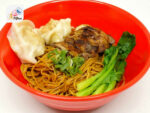
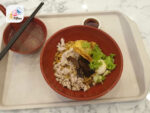
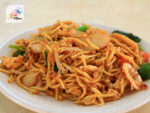
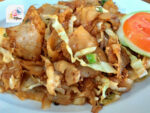
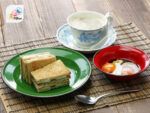
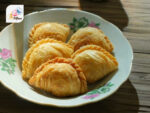
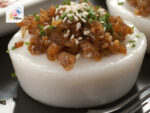
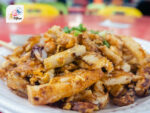
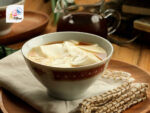
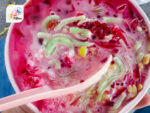
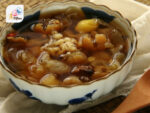
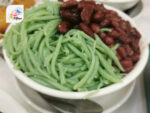
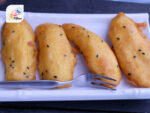
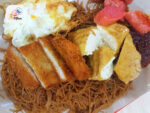
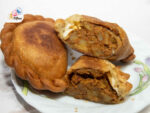
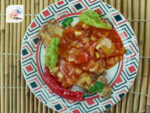
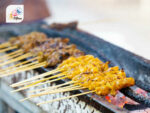
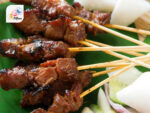
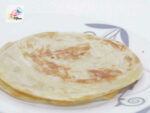
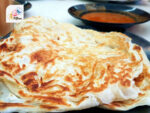
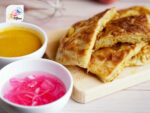
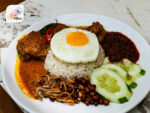
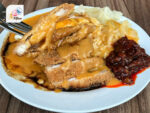
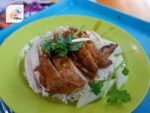
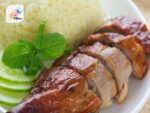
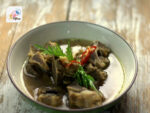
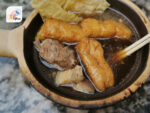
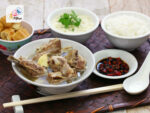
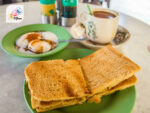


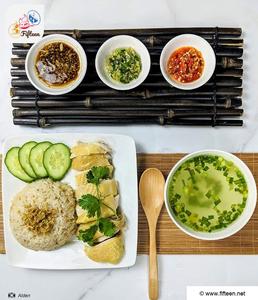
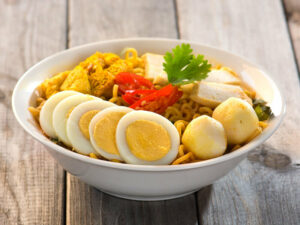
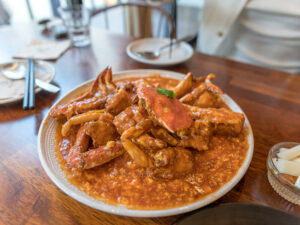
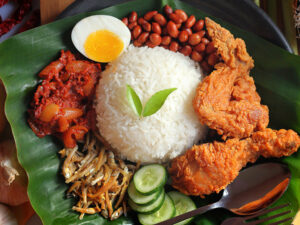
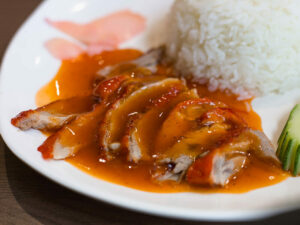
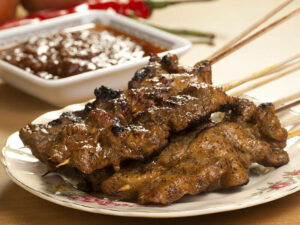
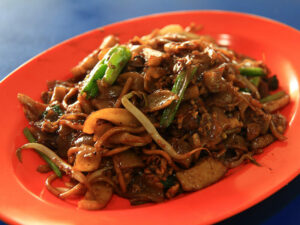
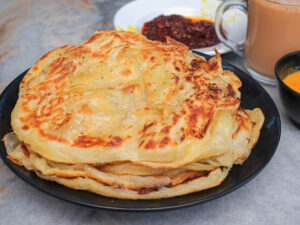
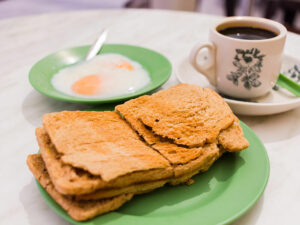
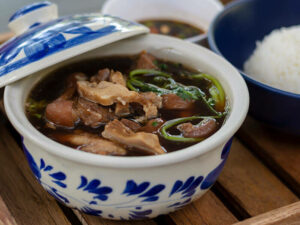
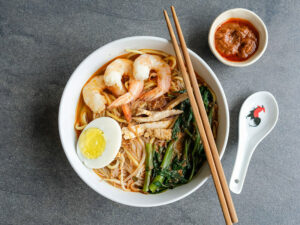
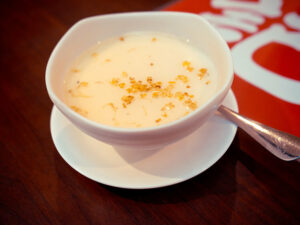
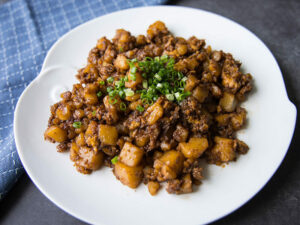
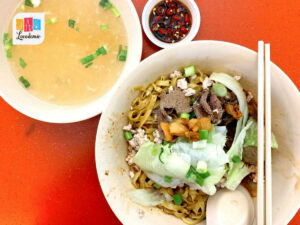
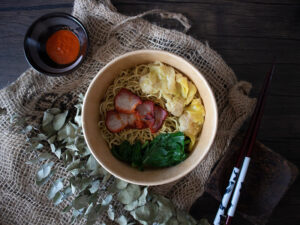
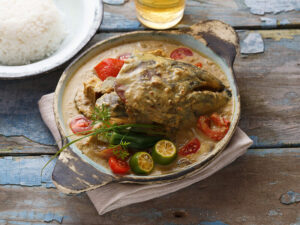
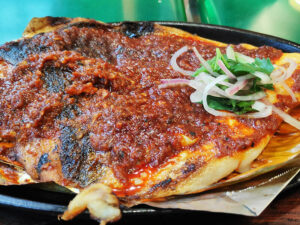
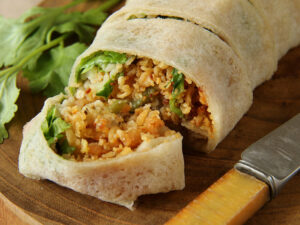
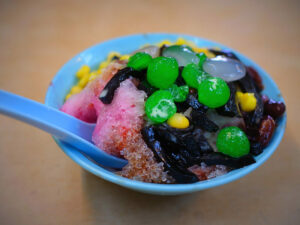
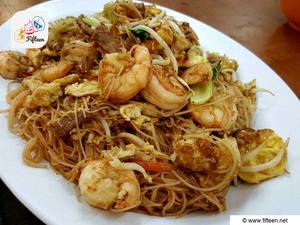
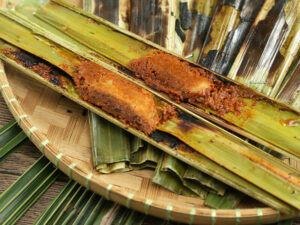
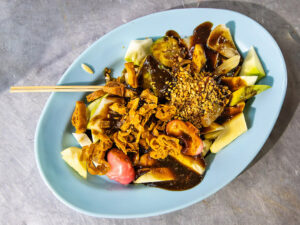
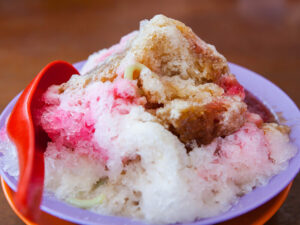
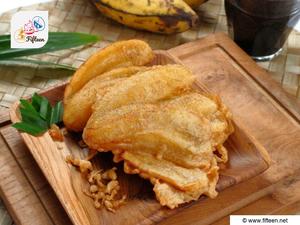
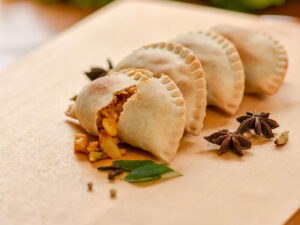
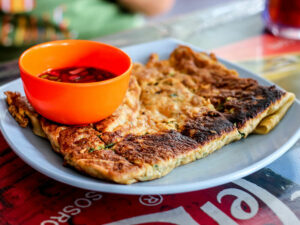
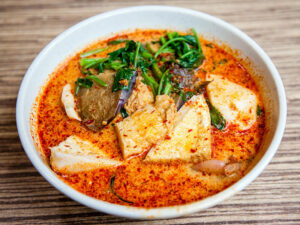
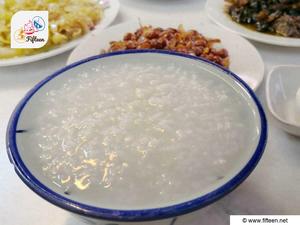
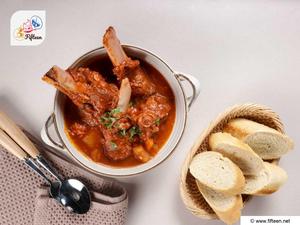
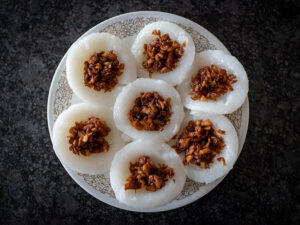
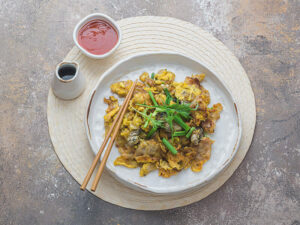
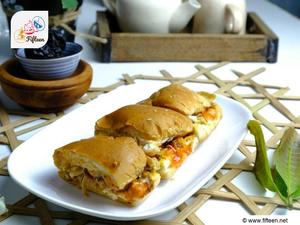
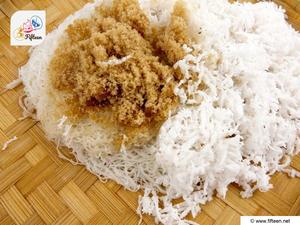
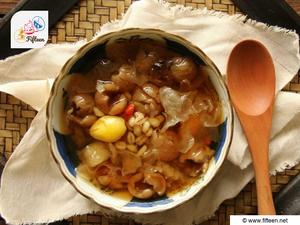
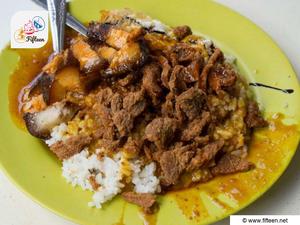
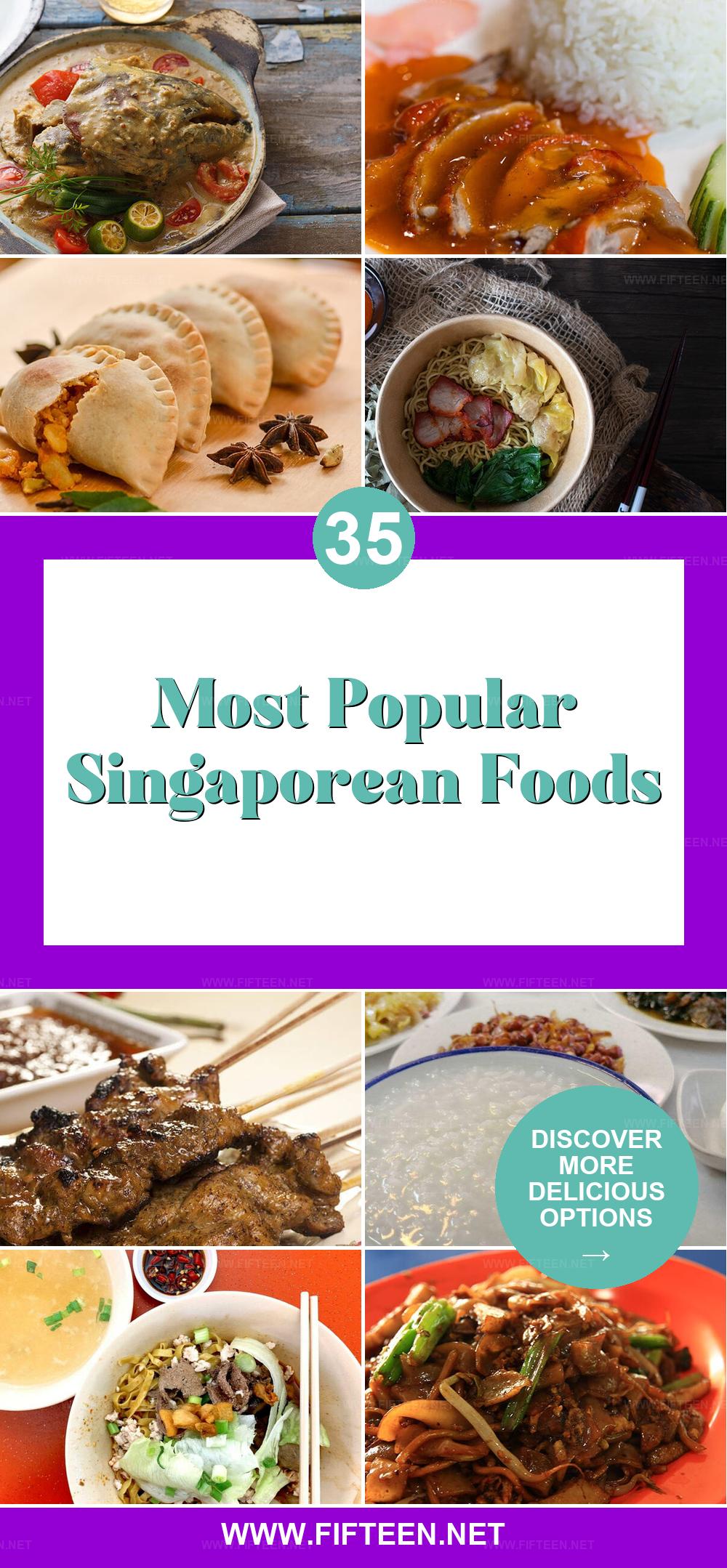
Jamie Scott
Editor in Chief, Senior Content Writer
Expertise
Home Cooking, Meal Planning, Recipe Development, Baking and Pastry, Food Editor, Cooking-video Maker, Western Food Evaluation Expert
Education
Le Cordon Bleu College of Culinary Arts
Local Community College, New York, NY
Jamie Scott is a skilled culinary expert and content creator specializing in Western cuisine. With over 15 years in the culinary field and formal training from Le Cordon Bleu, Paris, Jamie deeply understands how to blend nutrition with delicious flavors. His passion for cooking matches his commitment to making healthy eating accessible and enjoyable.
On Fifteen.net, Jamie brings a fresh perspective to classic dishes and beverages, offering readers insightful recipes, cooking tips, and a fresh view on meal planning that emphasizes taste, health, and simplicity.